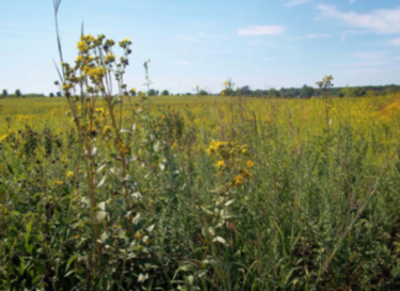Building rural community resilience in context of protected grasslands
Bill Stewart has engaged a strong research team to understand the challenges of building community resilience within proximity to large tracts of protect grasslands, specifically the Neal Smith National Wildlife Refuge in Iowa, and the Midewin National Tallgrass Prairie in Illinois. Along with Bill, the research team is comprised of Carena van Riper (Professor, Natural Resources and Environmental Sciences), Amy Ando (Professor, Agriculture and Consumer Economics), and Paul Gobster (Research Landscape Architect, USDA Forest Service, Northern Research Station).
A mixed-methods approach was employed in which each phase built on each other. (1) Develop a county level database on the presence of protected grasslands, presence of bison, and socio-economic well-being over the past three decades in the U.S. We will then carry out an analysis of these data to identify whether bison introductions have had beneficial effects on the surrounding rural communities. (2) Hold focus groups with stakeholders in two study sites where bison reintroductions have occurred in the context of grassland restoration efforts. The focus groups will use growth scenarios to facilitate dialogue on regional sense of place, preferences for growth, and identification of stakeholder decision-making forums. (3) Develop a profile of community resiliency for the two study sites, and include regional indicators of social and economic strengths, level of engagement forums for stakeholders, and extent of regional senses of place. Residents of the two study sites will be sampled and surveyed online and/or by mail to assess community ability to adapt to change. This profile will provide results of residents’ preferences for future growth, regional sense of place, and engagement in stakeholder forums. (4) Enhance community resiliency for
stakeholders of two study sites by supporting planning workshops for mutual learning about social and economic development related to bison re-introduction and associated landscape change, and provide a space for reflection of relevant results to the communities of the study sites.
Completion of Objective 1 will result in a quantitative assessment of the economic impacts to rural communities and regions in which bison have been re-introduced in contexts of grasslands, and to understand how these impacts influence a community’s ability to adapt to change.
Completion of Objective 2 will result in a comparative framework to understand strategies of community leaders and stakeholder groups to assess regional growth opportunities in two protected grasslands where bison have been re-introduced: Midewin National Tallgrass Prairie (Will County, IL) and the Neal Smith National Wildlife Refuge (Jasper County, IA).
Completion of Objective 3 will result in a profile of communities adjacent to the two study sites, and an assessment of resident responses to regional indicators of social and economic growth.
Completion of Objective 4 will result in planning workshops for mutual learning about social and economic development related to bison re-introduction and associated landscape change at both Midewin National Tallgrass Prairie and the Neal Smith National Wildlife Refuge

